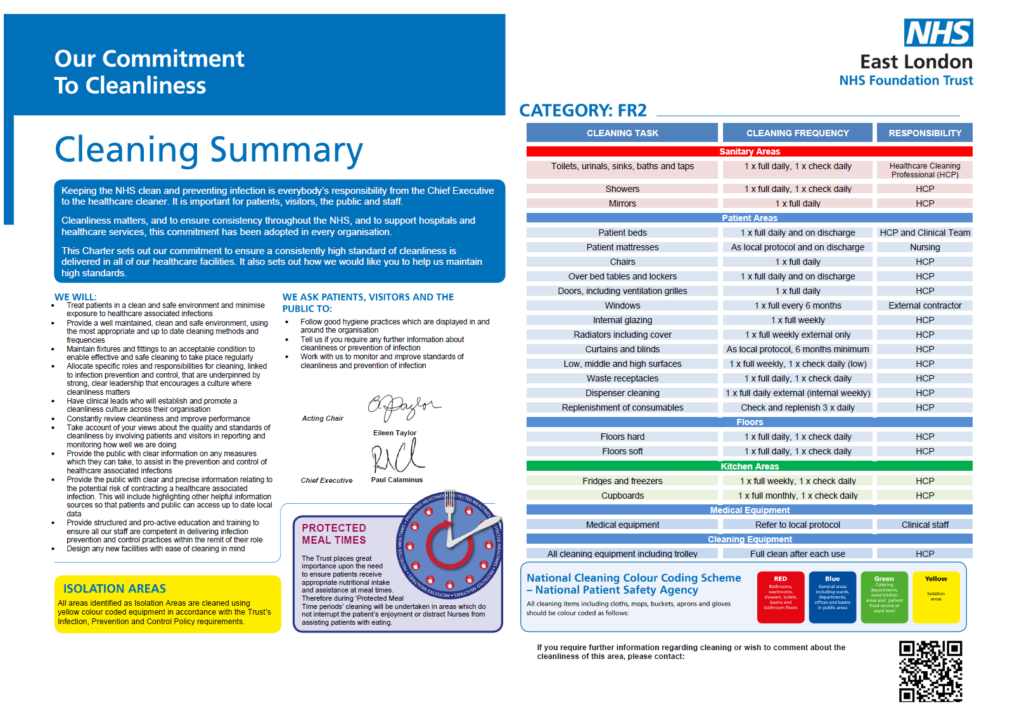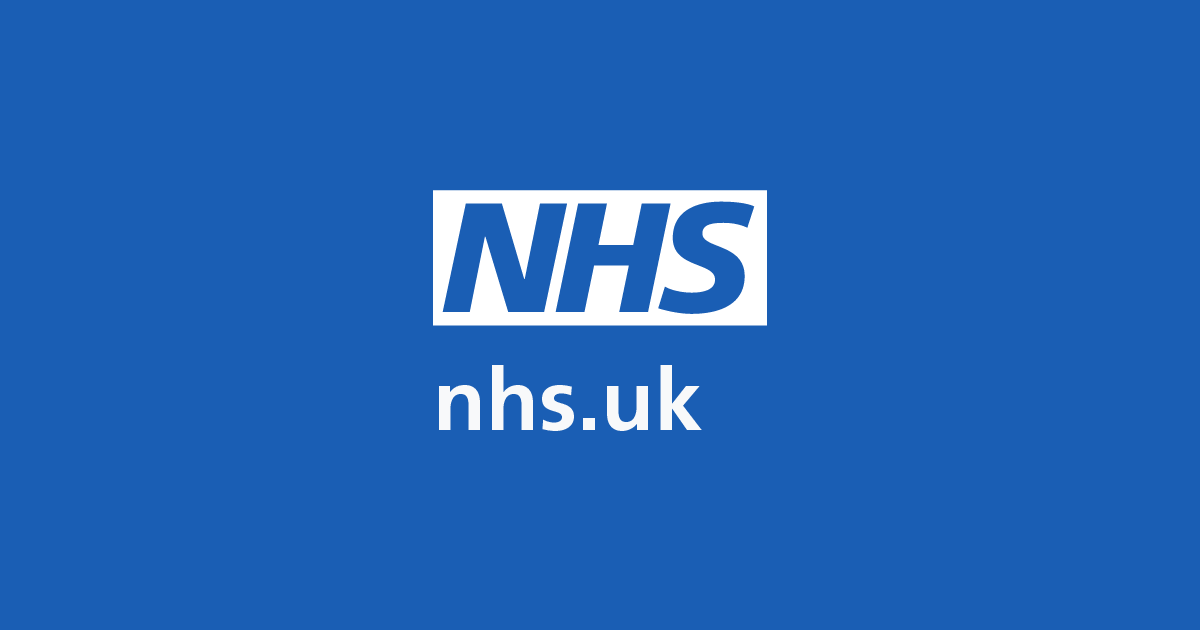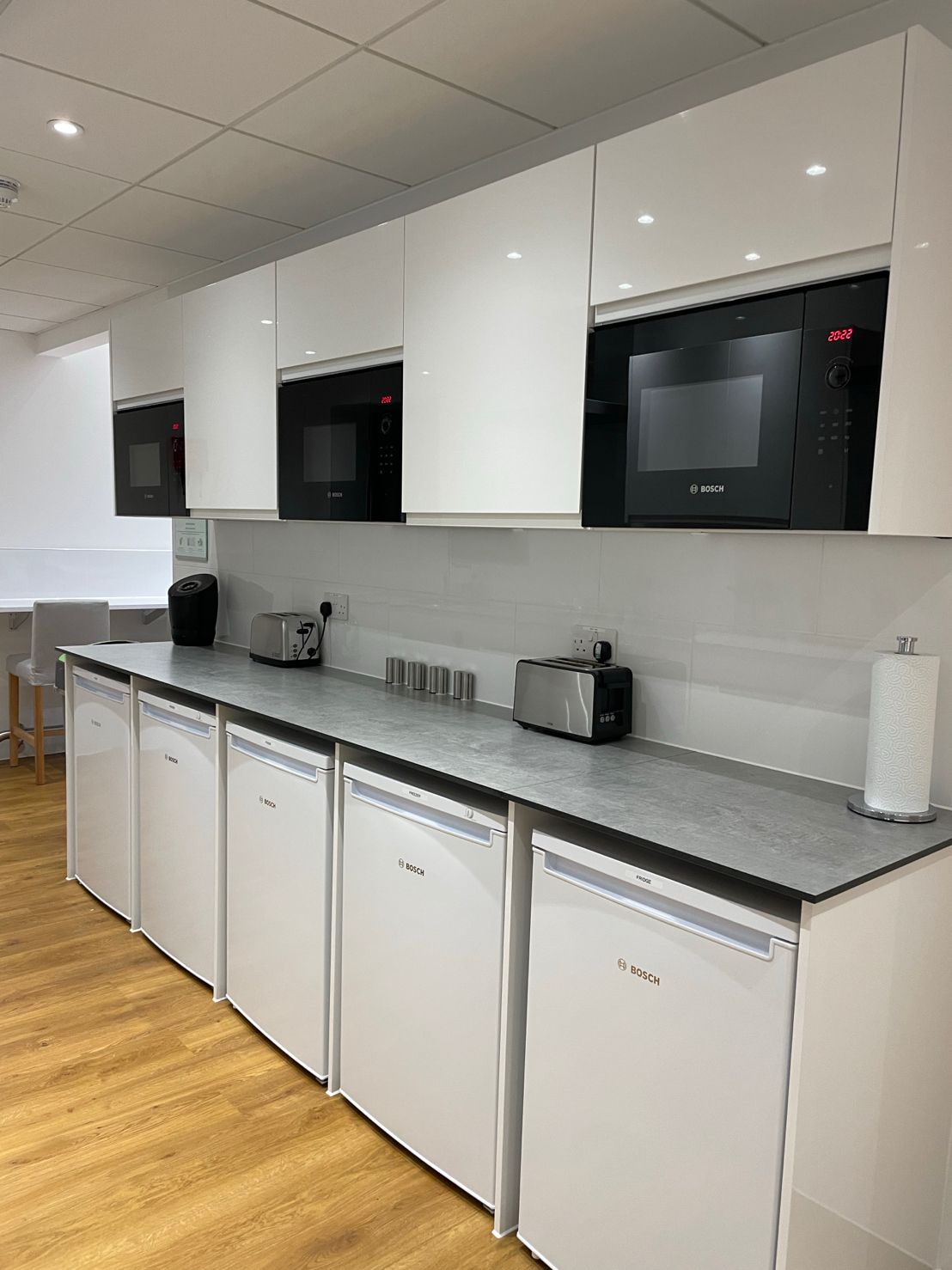The new national standards for Medical Cleaning
The introduction of the new National Standards of healthcare cleanliness in 2021 has brought about a significant shift in the expectations and practices of cleaning companies operating in medical establishments. With full compliance expected by November 2022, it is crucial for cleaning companies in healthcare settings, including GP surgeries, dental practices, and hospitals, to incorporate these new guidelines into their operations.
Replacing the National Specifications for Cleanliness in the NHS, which was published back in 2007 by the National Patient Safety Agency, the National Standards of Healthcare Cleanliness 2021 aims to foster continuous improvement in cleanliness standards. These standards encompass a comprehensive range of mandates, guidance, recommendations, and best practices, providing a framework for maintaining a high level of cleanliness and hygiene in all healthcare settings.
By applying these standards, healthcare facilities can ensure that a minimum safe standard is met when it comes to their cleaning arrangements. Compliance with the new standards is not optional but mandatory, highlighting the crucial importance of upholding the highest levels of cleanliness and hygiene in healthcare environments.
These new standards have been designed to address the evolving needs and challenges in healthcare settings, taking into account the latest research and advancements in infection prevention and control. They serve as a benchmark for cleaning companies to deliver services that contribute to the overall safety and well-being of patients, staff, and visitors in medical establishments.
Embracing the new National Standards of healthcare cleanliness is an essential step toward ensuring a safe and hygienic healthcare environment. By adhering to these guidelines, cleaning companies can play a vital role in preventing the spread of infections, promoting patient safety, and upholding the reputation of healthcare facilities.
The full compliance deadline was November 2022, so it is crucial for cleaning companies operating in medical settings to familiarize themselves with the new standards, update their practices accordingly, and work closely with healthcare providers to implement the necessary changes. At Peak we do just this, you can read our latest medical cleaning case study here. Together, we can create an environment where patients receive the highest standards of care in a clean and safe healthcare facility.
What are the new standards for Medical Cleaning?
- Functional risk categories
- Commitment to cleanliness charter
- A new audit process
- Star ratings
- Detailed cleaning specification
Functional Risk Categories
The new standards for cleanliness introduced by the NHS in 2021 encompass functional risk categories that help healthcare organizations assess and manage potential risks within their facilities. These risk categories serve as a framework for identifying areas that require heightened attention and specific cleaning protocols. Let’s explore these functional risk categories in more detail:
Clinical Risk Areas: Clinical risk areas refer to spaces within a healthcare facility where direct patient care is provided. These areas are typically associated with higher levels of contamination and infection risk. Examples include operating theaters, treatment rooms, and isolation units. The new standards emphasize the importance of implementing rigorous cleaning protocols and infection prevention measures in these areas to safeguard patient health and prevent the spread of infections.
Non-Clinical Risk Areas: Non-clinical risk areas encompass spaces within the healthcare facility that do not directly involve patient care but still pose potential risks. These areas may include administrative offices, waiting rooms, and corridors. While the level of contamination may be lower compared to clinical areas, effective cleaning and maintenance are still necessary to maintain a safe and comfortable environment for patients, staff, and visitors.
High-Risk Areas: High-risk areas are spaces within the healthcare facility where there is an increased likelihood of contamination or transmission of infectious agents. These areas may include intensive care units, isolation rooms, or areas where patients with highly contagious diseases are treated. The new standards emphasize the need for stringent cleaning procedures, including the use of appropriate personal protective equipment (PPE) and specialized cleaning techniques, to minimize the risk of cross-contamination and ensure the safety of patients and healthcare personnel.
Community Risk Areas: Community risk areas refer to spaces within the healthcare facility that are frequented by the general public, including visitors, patients, and non-clinical staff. These areas may include reception areas, entrances, and public restrooms. While the risk of contamination may be lower compared to clinical areas, maintaining cleanliness and hygiene in community risk areas is essential for creating a positive and welcoming environment for all stakeholders. Regular cleaning, proper waste management, and the availability of hand hygiene facilities are key components in mitigating risks within these areas.
By categorizing functional risk areas, the new standards for cleanliness provide healthcare organizations with a systematic approach to assess, prioritize, and implement appropriate cleaning protocols based on the level of risk associated with each area. This approach ensures that resources are allocated effectively, with an emphasis on areas where the potential for harm or transmission of infections is highest.
Adhering to the functional risk categories outlined in the new standards enables healthcare organizations to proactively manage cleanliness and infection prevention, safeguard patient safety, and create a conducive environment for effective healthcare delivery. By implementing robust cleaning procedures tailored to the specific needs of each risk category, healthcare facilities can minimize the spread of infections, enhance patient outcomes, and maintain a high standard of cleanliness throughout their premises.
Commitment to cleanliness charter
Starting from November 2022, a significant requirement will be placed upon healthcare organizations: the display of a charter in a prominent, public-facing area, such as a patient waiting room. This charter serves as a powerful declaration, clearly outlining the organization’s unwavering commitment to achieving and maintaining a consistently high standard of cleanliness in their facilities.
The charter represents a tangible embodiment of the healthcare organization’s dedication to excellence in cleanliness and hygiene practices. By prominently displaying this charter, healthcare organizations aim to instill confidence and assurance in patients, visitors, and staff regarding the organization’s commitment to their health, safety, and well-being.
This public display serves as a constant reminder of the organization’s adherence to the highest standards of cleanliness. It reinforces the notion that cleanliness is not merely a functional requirement but a core value deeply ingrained in the organization’s culture and operations. Patients and visitors can take solace in the fact that their healthcare provider is actively prioritizing a clean and safe environment for their care.
Beyond its symbolic significance, the public display of the charter also creates a sense of transparency and accountability. It invites patients and visitors to actively engage with the organization’s commitment to cleanliness, fostering a culture of open communication and trust. By making this pledge publicly visible, healthcare organizations encourage dialogue, feedback, and collaboration in maintaining and improving cleanliness standards.
The charter acts as a guiding document, outlining the specific measures and protocols that the organization has implemented to ensure a consistently high standard of cleanliness. It may include details about staff training, infection control procedures, regular audits, and the organization’s commitment to ongoing improvement.
Ultimately, the display of the charter serves as a visible representation of the organization’s dedication to the well-being of its patients and the broader community it serves. It reflects their responsibility to provide an environment that promotes healing, safety, and optimal healthcare outcomes.
As November 2022 approaches, healthcare organizations must embrace this requirement, ensuring the charter is displayed prominently and effectively communicates their commitment to cleanliness. This display not only fulfills regulatory obligations but also serves as a powerful statement of the organization’s values and dedication to exceptional healthcare standards.
By displaying the charter, healthcare organizations create an environment where patients can feel confident and secure in their choice of provider, knowing that their well-being and safety are paramount. It sets a standard for excellence in cleanliness, reinforcing the organization’s commitment to delivering exceptional care in a clean and hygienic environment.

Audit Process
The implementation of the new standards brings with it the requirement for three distinct types of audits: technical, efficacy, and external. Let’s delve into each of these audits to provide you with a comprehensive understanding. It is important to note that when selecting a cleaning company for your medical premises, it is essential to inquire about their company audit process while considering the information provided below.
Technical Audit: Under the new standards, a 50-point technical audit has been introduced. You can access the detailed 50-point checklist by clicking here. According to the guidelines, each site is responsible for conducting its own audits. As a cleaning contractor, it is crucial for you to regularly assess and monitor the standard of cleaning. It may be necessary to update your auditing system to align with the specific requirements for medical practices. At Peak Commercial Cleaning, we have implemented these changes to ensure compliance with the technical audit.
Efficacy Audit: The efficacy audit focuses on evaluating the cleaning processes rather than what or how frequently you clean. This audit aims to ensure that the cleaning contractors employ the correct cleaning procedures and methods. It encompasses various aspects such as:
- Adherence to color coding procedures
- Timely response to complaints or concerns
- Proper utilization of personal protective equipment (PPE)
- Compliance with the prescribed cleaning methods
- Appropriate handling and storage of chemicals
- Adherence to uniform requirements
It is recommended to carry out an efficacy audit annually to assess and validate the effectiveness of the cleaning practices. You can access an example efficacy audit by clicking here for reference.
External Audit: As the name implies, an external audit involves an inspection conducted by a neighboring medical facility or an independent entity. These audits are highly encouraged as they provide an external and impartial evaluation of the cleanliness standards within a medical establishment. As a cleaning contractor, it is not your responsibility to arrange or oversee these audits. However, it is important to welcome any feedback that may be provided during external audits and proactively seek out this information to continuously improve your cleaning services.
By familiarizing yourself with these different types of audits and their respective requirements, you can ensure that your cleaning company meets the necessary standards and delivers exceptional cleanliness in medical settings. The audits serve as essential tools to assess the effectiveness, compliance, and overall quality of the cleaning processes implemented. As a result, healthcare organizations can maintain a clean and hygienic environment that prioritizes patient safety and well-being.
Star Ratings
You may find the new star ratings to be familiar, as they draw inspiration from the widely recognized system employed in the hospitality industry. One notable example is the food safety ratings prominently displayed on the windows of restaurants and hotels. These star ratings have proven to be simple yet highly effective means of conveying meaningful information about the quality and standards upheld by an organization.
Similarly, the introduction of star ratings in healthcare cleanliness aims to provide an instantly recognizable and easily understandable indicator of cleanliness to staff, patients, and the general public. With a quick glance, individuals can assess the level of cleanliness maintained by a healthcare facility, offering reassurance and confidence in the environment they are in.
These star ratings serve as a visual representation of the commitment of healthcare organizations to maintaining high standards of cleanliness. They offer a clear benchmark that helps stakeholders gauge the overall quality and hygiene practices implemented by the organization. The simplicity and familiarity of the star rating system make it a user-friendly tool that effectively communicates information about cleanliness standards.
By employing star ratings, healthcare facilities can establish a transparent and standardized approach to cleanliness assessment. Staff members, patients, and the public can easily comprehend and interpret the rating, enabling them to make informed decisions about their healthcare choices. This transparency not only enhances trust but also encourages healthcare organizations to strive for continuous improvement in their cleanliness practices.
Moreover, the star rating system creates a sense of accountability and encourages healthcare facilities to consistently maintain and improve their cleanliness standards. As organizations strive to achieve higher ratings, they will prioritize the implementation of best practices, effective cleaning protocols, and thorough quality assurance processes.
In summary, the adoption of star ratings in healthcare cleanliness draws inspiration from the proven success of this approach in the hospitality industry. It provides a straightforward and effective means of conveying information about cleanliness standards to staff, patients, and the general public. By embracing these star ratings, healthcare organizations demonstrate their commitment to maintaining a clean and safe environment, fostering trust, and continuously striving for excellence in cleanliness practices.

Detailed Cleaning Specification
As a cleaning contractor, it is crucial to establish a comprehensive and detailed specification of works for all contracts, with particular emphasis on medical establishments. This document serves as a roadmap, clearly outlining the specific cleaning tasks, responsible personnel, and designated timelines for completion. At Peak Commercial Cleaning, we recognize the significance of a well-designed cleaning specification tailored to meet the unique needs of each medical facility we serve. In collaboration with our clients, we have developed a rigorous cleaning specification that ensures the highest standards of cleanliness and hygiene.
The cleaning specification for medical establishments plays a vital role in maintaining a safe and sanitized environment for patients, staff, and visitors. It goes beyond general cleaning tasks and delves into the specific requirements essential for healthcare settings. By adhering to a comprehensive cleaning specification, cleaning contractors can ensure that all areas within the medical facility, including waiting rooms, examination rooms, and common areas, receive the necessary attention and care.
A robust cleaning specification may include details such as the frequency of cleaning tasks, specific cleaning methods and products to be used, and guidelines for infection control procedures. It should also outline any specialized equipment or techniques required for handling hazardous waste or biohazard materials, ensuring compliance with strict regulations and maintaining the utmost safety standards.
Collaboration between the cleaning contractor and the medical establishment is crucial when creating a cleaning specification. By working closely with healthcare professionals, we can understand the unique needs of the facility, such as the presence of sensitive equipment or areas requiring extra attention due to infection control concerns. This collaborative approach allows us to customize the cleaning specification, ensuring it aligns with the specific requirements of the medical establishment.
As an example, the NHS provides a comprehensive cleaning specification that serves as a valuable reference point for cleaning contractors working in medical settings. This document offers guidance on various aspects of cleaning, including room-by-room cleaning checklists, specific procedures for handling spills or bodily fluids, and guidelines for maintaining high standards of hygiene.
By implementing a detailed cleaning specification, cleaning contractors demonstrate their commitment to delivering exceptional cleanliness standards in medical establishments. The specification acts as a roadmap for cleaning teams, ensuring that every task is executed efficiently and thoroughly. It provides clarity, accountability, and a benchmark for quality control, enabling healthcare organizations to maintain a safe and healthy environment for their patients and staff.
In conclusion, a well-crafted cleaning specification is essential for cleaning contractors operating in medical establishments. It provides a clear framework for cleaning tasks, responsibilities, and timelines, ensuring that all areas of the facility receive the necessary attention. At Peak Commercial Cleaning, we prioritize the development and implementation of rigorous cleaning specifications, tailored to meet the unique needs of each medical establishment we serve. Through collaboration with our clients and adherence to industry guidelines, we ensure the highest standards of cleanliness and hygiene in healthcare settings.

Summary
For the full document and supporting documents, visit the NHS website.
In conclusion, the introduction of new NHS standards for medical cleaning marks a significant milestone in ensuring the highest standards of cleanliness and hygiene in healthcare facilities. This blog post has shed light on the key updates and requirements outlined in these standards, emphasizing the critical role of effective medical cleaning in preventing infections and protecting patient safety. By adhering to these standards, healthcare providers can create a safer and healthier environment for patients, staff, and visitors. It is imperative for healthcare facilities to stay informed and implement these guidelines to uphold the highest standards of cleanliness, thereby enhancing the overall quality of care provided. As we embrace these new NHS standards, we embark on a collective journey towards safer, more hygienic medical facilities that prioritize patient well-being and the delivery of excellent healthcare services.
At Peak Commercial Cleaning we are committed to adhering to the new standards set out above. As your medical cleaning contractor, we can help you to create a fully compliant cleaning plan which incorporates the new standards.
Read more about our Medical Cleaning Services here or contact us using our contact form here.


